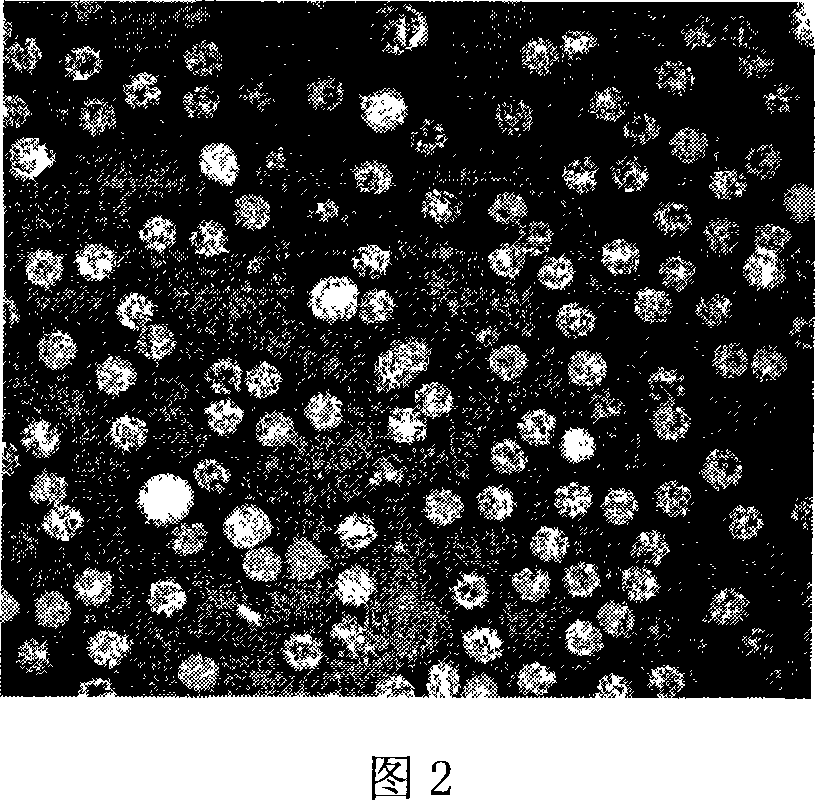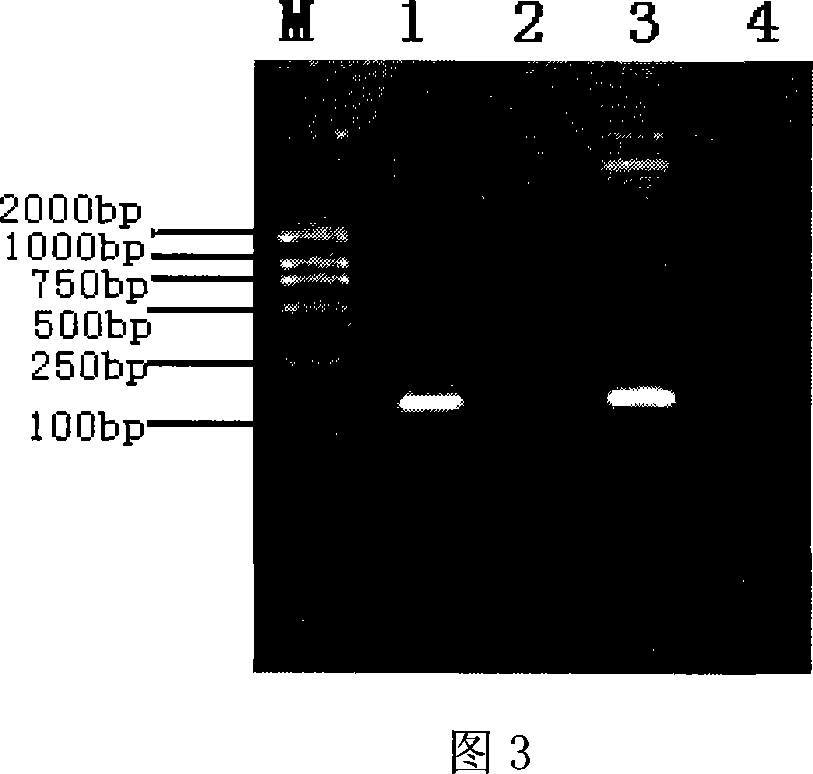Virus-like particles containing O-type foot-and-mouth disease virus IRES RNA, preparation method and application
A foot-and-mouth disease virus and virus-like technology, applied in the field of virus-like particles, can solve the problems of easy infection, inability to monitor RNA virus detection in the whole process, ribonuclease degradation, etc., and achieve the effects of low cost, favorable promotion and use, and easy preservation.
- Summary
- Abstract
- Description
- Claims
- Application Information
AI Technical Summary
Problems solved by technology
Method used
Image
Examples
Embodiment 1
[0041] Embodiment 1: the preparation method of the virus-like particle containing O-type foot-and-mouth disease virus IRES RNA
[0042] The preparation method of the virus-like particle containing O-type foot-and-mouth disease virus IRES RNA comprises the following steps:
[0043] (1) Construction of the initial vector pET32a-CP:
[0044] in pMS 2 7. The plasmid is used as a template to amplify the CP fragment. The PCR system is: 10×PCR buffer 2μl, TaqDNA Polymerase 0.2μl (5u / μl), dNTP 0.5μl (10mmol / L), template 1μl, upstream and downstream primers 0.5μl (10μmol / μl) L), add 20 μl of double distilled water. The PCR reaction conditions were: denaturation at 94°C for 5 min, followed by 28 cycles of 94°C for 30 s, 60°C for 30 s, and 72°C for 2 min, and finally extension at 72°C for 7 min. The amplified product was subjected to agarose gel electrophoresis, and the CP fragment was purified and recovered with a gel extraction kit. The recovered CP fragment and plasmid pET32a were...
Embodiment 2
[0051] Example 2: Double-enzyme digestion identification of RNaseA and DNase I of the expressed product after sonication
[0052] The expression product after sonication was digested with RNaseA and DNase I for single enzyme and double enzyme digestion for 1 hour respectively, as shown in Figure 1: After the expression product was digested with RNaseA and DNase I double enzymes, a fluorescence of about 1500bp can be seen Streaks; the presence of bacterial RNA can be seen after only DNase I digestion; only after RNaseA digestion, bacterial RNA has been degraded. The expression products were placed at room temperature for 20 days and then digested with enzymes. The electrophoresis results showed the presence of the expression products, indicating that the virus-like particles had the characteristics of ribonuclease resistance and good stability.
Embodiment 3
[0053] Example 3: Morphological observation of purified virus-like particles
[0054] The virus-like particles purified by sucrose density gradient centrifugation were stained with uranyl acetate for 5 minutes, and observed under a JM2100 electron microscope. As shown in Figure 2, round particles with a diameter of about 26 nm can be seen, which are expressed virus-like particles (viral like particles, VLPs).
PUM
 Login to View More
Login to View More Abstract
Description
Claims
Application Information
 Login to View More
Login to View More - R&D
- Intellectual Property
- Life Sciences
- Materials
- Tech Scout
- Unparalleled Data Quality
- Higher Quality Content
- 60% Fewer Hallucinations
Browse by: Latest US Patents, China's latest patents, Technical Efficacy Thesaurus, Application Domain, Technology Topic, Popular Technical Reports.
© 2025 PatSnap. All rights reserved.Legal|Privacy policy|Modern Slavery Act Transparency Statement|Sitemap|About US| Contact US: help@patsnap.com



